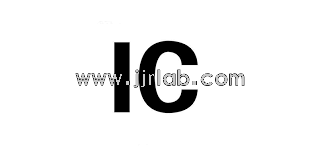
EU Christmas Light Compliance Certification
When selling Christmas lights in the EU market, a series of compliance requirements must be met to ensure product safety and legality. The main qualifications and certifications include:
CE certification
Scope: Christmas lights must comply with EU safety, health, and environmental protection requirements and obtain CE certification. This is a prerequisite for entering the EU market, signifying that the product meets the relevant EU directives.
Main applicable directives:
- low voltage directive (LVD, 2014/35/EU): Applicable to electrical products to ensure safety within the rated voltage range.
- Electromagnetic Compatibility Directive (EMC, 2014/30/EU): Ensures the product does not cause improper electromagnetic interference and can withstand external electromagnetic interference.
- Ecodesign Directive (ErP, 2009/125/EC): If the Christmas lights involve energy efficiency (e.g., LED lights), compliance with this directive is necessary to ensure no energy is wasted throughout the product lifecycle.
RoHS Compliance
Scope: All electronic products in the EU market must comply with the RoHS Directive (2011/65/EU), which restricts the use of certain hazardous substances such as lead, mercury, and cadmium. This REDuces the environmental impact of electronic waste.
Requirements: Products shoULd not contain harmful substances exceeding the prescribed limits. Manufacturers must conduct testing and maintain proof of compliance.
weee certification
Scope: If Christmas lights are electronic products that may eventually be discarded by consumers, compliance with the Waste Electrical and Electronic Equipment Directive (WEEE, 2012/19/EU) is required. The directive mandates that manufacturers register in the EU and take steps to recycle and handle discarded products.
Requirements: Products must bear a recycling symbol and be recycled through appropriate channels.
EN Standards (European Standards)
Scope: The EU has clear technical standards for many products, including Christmas lights. Generally, the following standards apply:
- EN 60598-2-20: Safety requirements for luminaires, particularly decorative electrical products like Christmas lights.
- EN 55015: Limits on radiated electromagnetic interference (EMI) for electrical devices.
- EN 61547: Electromagnetic immunity for electrical products.
These standards cover product safety, energy efficiency, material safety, and other aspects.
Product Labels and Manuals
- Language Requirements: Products sold in the EU must include user manuals in the local language. Manuals should provide safety information, maintenance instructions, and an EU compliance declaration.
- Energy Efficiency Labels: If the product is an LED light, an energy efficiency label displaying the product's energy consumption rating may be required.
eu authorized representative
Requirement: If your company is not located in the EU but plans to sell products there, you must designate an EU Authorized Representative. This representative is responsible for communicating with EU regulatory bodies and ensuring the product complies with EU regulations.
Responsibilities of Importers and Distributors
- Importers: If you manufacture products outside the EU and sell them in the EU market, as an importer, you are responsible for ensuring the products comply with all relevant requirements. Importers must ensure the product has a CE mark and maintain relevant documentation (e.g., test reports, compliance declarations).
- Distributors: Distributors are also responsible for ensuring the products they sell comply with EU regulations, although they do not need to perform the certifications themselves.
When selling Christmas lights to the EU market, you must ensure compliance with relevant regulations, including CE certification, RoHS, and WEEE directives. China's JJR Laboratory provides CE certification services for Christmas lights. Feel free to consult us.
Email:hello@jjrlab.com
Write your message here and send it to us
 Canada ISED Certification (IC Certification) Analy
Canada ISED Certification (IC Certification) Analy
 CSA C22.2 No.42 Compliance Test Report for Amazon
CSA C22.2 No.42 Compliance Test Report for Amazon
 FCM Food Contact Materials Compliance Certificatio
FCM Food Contact Materials Compliance Certificatio
 EN14350 Testing for Amazon Baby Feeding Products
EN14350 Testing for Amazon Baby Feeding Products
 Infant Support Pillow 16 CFR 1243/1242 & ASTM
Infant Support Pillow 16 CFR 1243/1242 & ASTM
 BRM Registration Card Under CFR Part 1130 Regulati
BRM Registration Card Under CFR Part 1130 Regulati
 How to get a D-U-N-S® Number for US FDA Registrati
How to get a D-U-N-S® Number for US FDA Registrati
 Household Massage Devices Compliance in the China
Household Massage Devices Compliance in the China
Leave us a message
24-hour online customer service at any time to respond, so that you worry!




